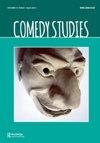Tracing the events and impacts of the Canadian satire boom of the 1960s
Q1 Arts and Humanities
引用次数: 0
Abstract
Abstract In the 1960s, Canada began shedding political, symbolic and cultural vestiges of its colonial ties to Britain. Politicians, Quebec separatists, new immigrant groups and university educated young people questioned what a modern Canada should be. Canadian comedians responded in part by adapting satirical techniques popularised by British stage revues like Beyond the Fringe, whose iconoclastic humour provided a voice with which to confront public figures and current events much more directly than had been done in traditional Canadian comedy. Canadian satirists drew critical praise when they first appeared in small clubs in Toronto, the country’s metropolis and the centre of English-language media. As satire’s popularity grew, television executives and political figures tried to harness the new comedy in hopes of appearing attuned to a changing country. However, when Canadian satirists received wider exposure on television, stage and internationally they shocked some people as vulgar and strident, while disappointing others for being too gentle. Within a very few years, satire’s moment was over, and its place in Canadian comedy history is obscure. This article attempts to define Canada’s ‘satire boom’ of the early-1960s as a foundational era for modern Canadian comedy, during which performers shed vaudeville tropes jokes for direct, irreverent, angry, observational humour about the contemporary world. Where Canada’s satirists are mostly unknown today, they helped lay the foundations on which the Canadian sketch comedy of the 1970s was built, and from which emerged international stars like John Candy, Eugene Levy and Catherine O’Hara.追溯20世纪60年代加拿大讽刺热潮的事件和影响
20世纪60年代,加拿大开始摆脱与英国殖民关系的政治、象征和文化痕迹。政治家、魁北克分离主义者、新移民团体和受过大学教育的年轻人质疑现代加拿大应该是什么样子。加拿大喜剧演员的部分回应是采用了英国舞台讽刺剧《边缘之外》(Beyond the Fringe)中流行的讽刺技巧。与传统的加拿大喜剧相比,《边缘之外》(Beyond the Fringe)中反传统的幽默提供了一种更直接地面对公众人物和时事的声音。加拿大讽刺作家的作品首次出现在多伦多的小俱乐部时,受到了评论界的赞扬。多伦多是加拿大的大都市,也是英语媒体的中心。随着讽刺剧越来越受欢迎,电视高管和政治人物试图利用这种新喜剧,希望自己能适应这个不断变化的国家。然而,当加拿大讽刺作家在电视、舞台和国际舞台上获得更广泛的曝光后,他们因粗俗和尖锐而令一些人震惊,同时又因过于温和而令另一些人失望。没过几年,讽刺的时代就结束了,它在加拿大喜剧史上的地位也变得模糊不清。本文试图将20世纪60年代早期加拿大的“讽刺热潮”定义为现代加拿大喜剧的基础时代,在此期间,表演者摆脱了杂耍式的笑话,以直接,不敬,愤怒,观察当代世界的幽默。如今,加拿大的讽刺作家大多不为人所知,但他们为20世纪70年代加拿大小品喜剧的诞生奠定了基础,并由此诞生了约翰·坎迪(John Candy)、尤金·利维(Eugene Levy)和凯瑟琳·奥哈拉(Catherine O’hara)等国际明星。
本文章由计算机程序翻译,如有差异,请以英文原文为准。
求助全文
约1分钟内获得全文
求助全文
来源期刊

Comedy Studies
Arts and Humanities-Literature and Literary Theory
CiteScore
0.60
自引率
0.00%
发文量
26
 求助内容:
求助内容: 应助结果提醒方式:
应助结果提醒方式:


